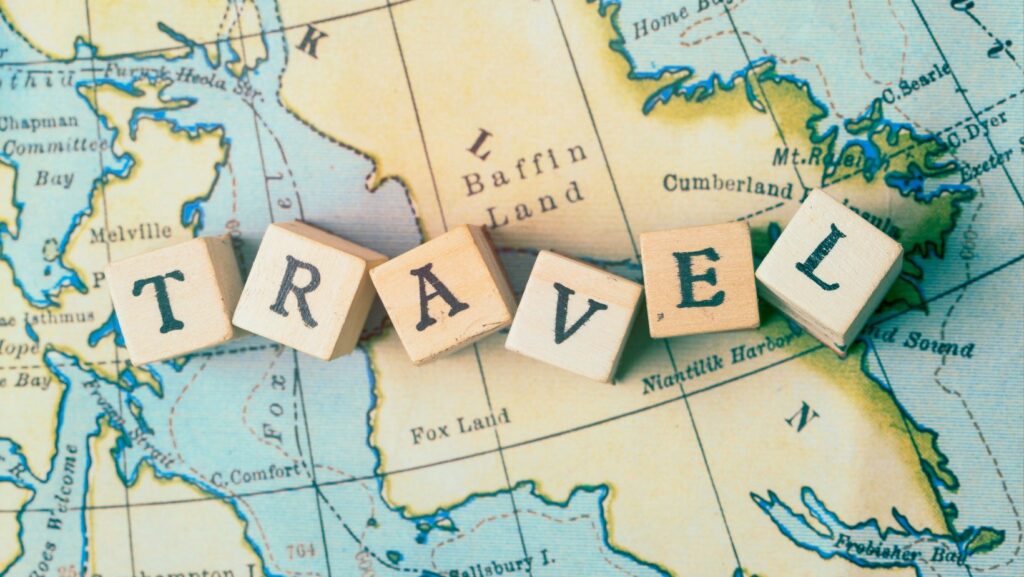Is Overseas Adventure Travel Solvent
- Growing Demand for Adventure Travel: The adventure travel market is experiencing significant growth, with an average annual growth rate of approximately 15%, driven by travelers seeking unique and transformative experiences.
- Sustainability Matters: Eco-consciousness is a key factor influencing consumer preferences, with travelers favoring companies that prioritize sustainability and community engagement in their offerings.
- Economic Challenges: Adventure travel businesses must navigate economic fluctuations, which can impact consumer spending and demand, requiring flexible pricing strategies to accommodate varying budgets.
- Investment Opportunities: The adventure travel sector presents diverse investment opportunities, particularly in areas like eco-tourism and guided expeditions, aligning with the trend towards responsible travel solutions.
- Success Through Innovation: Successful companies, such as Intrepid Travel and G Adventures, demonstrate that implementing sustainable practices, offering unique experiences, and adapting to consumer needs can lead to significant growth and market share increases.
 As the world gradually opens up after years of travel restrictions, adventure seekers are eager to explore the great outdoors beyond their borders. The allure of overseas adventure travel is undeniable, offering thrilling experiences and breathtaking landscapes. However, many wonder if this trend is financially sustainable for both travelers and the industry itself.
As the world gradually opens up after years of travel restrictions, adventure seekers are eager to explore the great outdoors beyond their borders. The allure of overseas adventure travel is undeniable, offering thrilling experiences and breathtaking landscapes. However, many wonder if this trend is financially sustainable for both travelers and the industry itself.
With the rise of eco-consciousness and the growing demand for unique travel experiences, it’s crucial to examine the solvency of overseas adventure travel. Are these ventures resilient enough to withstand economic fluctuations? This article delves into the financial viability of adventure travel companies, the impact of changing consumer preferences, and the potential for growth in this dynamic sector.
Overview of Overseas Adventure Travel
Overseas adventure travel encompasses unique, immersive experiences that promote exploration in diverse environments. This sector appeals to travelers seeking outdoor activities, cultural experiences, and personal challenges. As demand increases, various adventure travel companies offer packages tailored to different preferences and budgets.
Adventure travel includes activities such as trekking, kayaking, cycling, and wildlife safaris. Each experience provides opportunities for physical engagement and cultural interaction. The appeal of adventure travel lies in its potential for personal discovery, coupled with the thrill of venturing into uncharted territories.
Market trends indicate a shift towards sustainable and responsible travel practices. Eco-conscious travelers prefer companies that prioritize environmental preservation and community engagement. This demand influences companies to adapt their practices, ensuring they align with consumer values.
Data from the Adventure Travel Trade Association indicates a growth trend in the adventure travel market. The sector’s annual growth rate averages around 15% over recent years, reflecting increased interest among travelers. As the industry evolves, companies must remain agile, adjusting to consumer insights and market demands to ensure long-term viability.
Overseas adventure travel represents a dynamic segment of the tourism industry. It addresses both the desire for exploration and the need for sustainable practices, appealing to a growing audience of adventurous travelers.
Financial Viability of Adventure Travel
Adventure travel demonstrates significant financial viability as the market expands and consumer preferences evolve. Companies in this sector must align their strategies with emerging trends to harness potential growth.
Market Trends and Demand
Market trends indicate a robust demand for adventure travel experiences. Travelers increasingly seek unique, transformative journeys that offer both adventure and cultural immersion. According to the Adventure Travel Trade Association, the adventure travel market has grown at an annual rate of approximately 15%. This growth reflects travelers’ preferences for engaging activities such as trekking, wildlife safaris, and cultural exchanges.
Eco-consciousness plays a crucial role in driving demand as travelers prioritize sustainability and responsible travel practices. Companies that focus on environmental preservation and community involvement attract a larger customer base. Flexible booking options and customized experiences cater to shifting consumer behaviors, making adventure travel companies more resilient in the face of market changes.
Investment Opportunities
Investment in adventure travel presents numerous opportunities. Investors can explore niches such as eco-tourism, guided expeditions, and local cultural experiences. These areas align with the growing consumer desire for authentic and responsible travel solutions.
Startups focusing on sustainable practices may attract attention due to their appeal to environmentally conscious travelers. Additionally, established companies can enhance financial viability by diversifying their offerings, improving technology integration, and expanding partnerships with local communities.
Overall, the adventure travel sector embodies potential for investment through innovation, sustainability, and aligning with changing consumer trends.
Risks and Challenges
Overseas adventure travel faces several risks and challenges that may impact its financial sustainability. Understanding these factors is crucial for both travelers and businesses operating within the industry.
Economic Factors
Economic fluctuations influence consumer spending habits on travel experiences. Economic downturns can result in reduced disposable income, prompting travelers to prioritize more affordable options. According to data from the Adventure Travel Trade Association, 34% of respondents consider cost a significant barrier to booking adventure travel. Exchange rate volatility may also affect prices for international travelers, leading to unpredictability in financial planning. Adventure travel companies must develop pricing strategies that accommodate these economic uncertainties to retain customers.
Environmental Concerns
Environmental degradation presents substantial challenges for the adventure travel sector. Increased travel activity can strain natural resources and ecosystems, potentially resulting in habitat destruction and biodiversity loss. A 2021 report from the United Nations Environment Programme indicates that tourism contributes to approximately 8% of global greenhouse gas emissions. Companies must implement sustainable practices to minimize their environmental impact, such as adopting low-carbon transport options and promoting conservation initiatives. Failure to address environmental concerns may lead to negative perceptions among eco-conscious travelers, which could adversely affect business viability.
Case Studies of Successful Adventure Travel Businesses
Example 1: Intrepid Travel
Intrepid Travel, a leader in small group adventures, reflects success through sustainable practices. It offers over 1,000 itineraries across the globe, focusing on responsible tourism. In 2022, Intrepid achieved a 40% increase in bookings compared to pre-pandemic levels, attributing growth to its commitment to carbon neutrality and local community engagement.
Example 2: G Adventures
G Adventures exemplifies innovation in the adventure travel sector. With over 700 different tour options, the company emphasizes local experiences facilitated by guides from the regions visited. G Adventures reported a 30% growth in their market share in 2023, driven by a strong focus on sustainable tourism and flexibility in booking policies.
Example 3: REI Adventures
REI Adventures showcases a unique model that combines retail with travel. The company provides adventure trips that align with outdoor lifestyles, enhancing customer loyalty. REI’s membership program boosts sales, contributing to a 25% increase in adventure travel revenue over the last year. The emphasis on curated outdoor experiences resonates with eco-conscious consumers.
Example 4: Wild Earth Adventures
Wild Earth Adventures targets niche markets, such as adventure travel for families. By creating customized family-friendly itineraries, it addresses the growing demand for multi-generational travel. In 2023, the company reported a 35% increase in family bookings, showing the effectiveness of tailored experiences in capturing diverse consumer interests.
Example 5: Black Tomato
 Black Tomato specializes in luxury adventure travel, merging opulence with unique experiences. Their “”Get Lost”” program offers exclusive travel adventures in remote locations, appealing to affluent travelers seeking adventure. An increase in booking rates of 50% in 2022 demonstrates the viability of high-end adventure offerings in the current market.
Black Tomato specializes in luxury adventure travel, merging opulence with unique experiences. Their “”Get Lost”” program offers exclusive travel adventures in remote locations, appealing to affluent travelers seeking adventure. An increase in booking rates of 50% in 2022 demonstrates the viability of high-end adventure offerings in the current market.
These case studies highlight the diverse strategies implemented by successful adventure travel businesses. Each company exemplifies how targeting specific niches, sustaining eco-friendly practices, and adapting to consumer trends contribute to financial viability in the evolving landscape of overseas adventure travel.
The Sector Presents Promising Investment Opportunities
The overseas adventure travel market is poised for significant growth as it adapts to evolving consumer preferences and a heightened focus on sustainability. Companies that prioritize eco-friendly practices and unique experiences are likely to thrive in this competitive landscape. With a growing demand for immersive journeys and cultural engagement, the sector presents promising investment opportunities.
However, challenges remain. Economic fluctuations and environmental impacts could affect financial sustainability. Businesses must navigate these complexities while maintaining a commitment to responsible travel. By staying agile and innovative, adventure travel companies can capitalize on the resurgence of interest in outdoor exploration, ensuring they remain solvent in a dynamic market.



